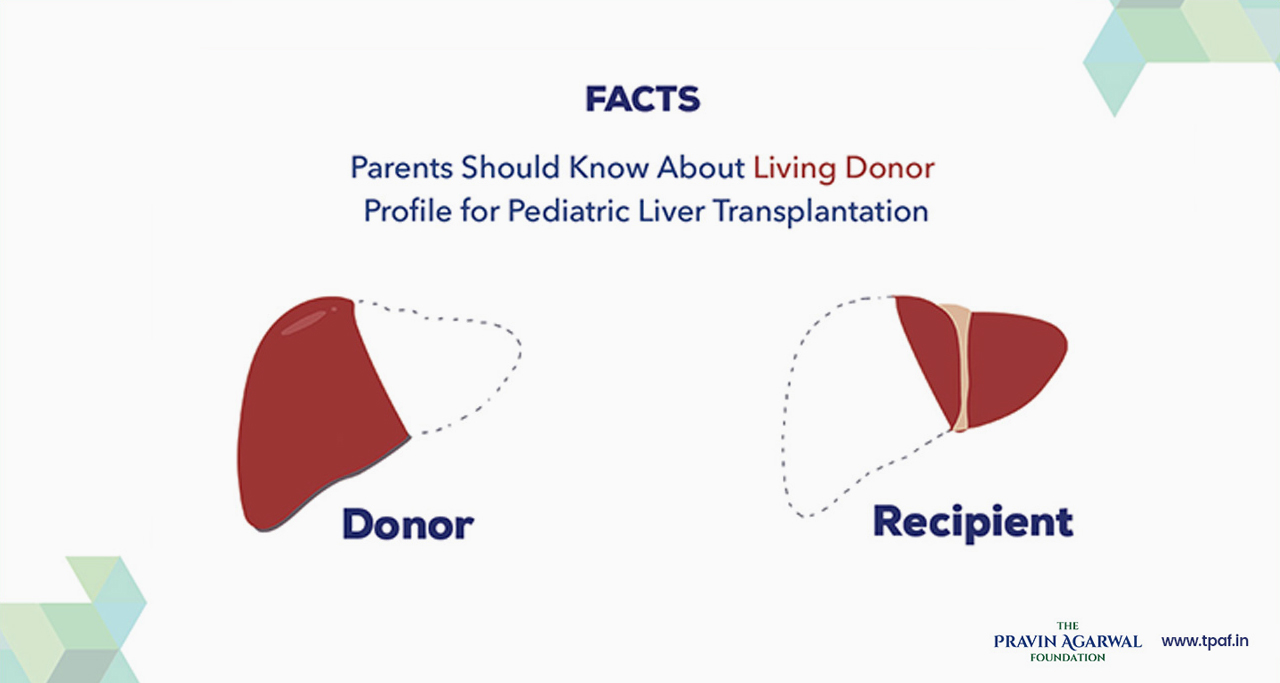Latest Update
Blogs

August 9,2019
/ adminFacts Parents Should Know About Living Donor Profile For Pediatric Liver Transplantation
In a surgery like liver transplantation, the role of the donor is as crucial as that of a recipient. The donors in liver transplant surgery can be a deceased or a living person. Living donation has a lot of advantages associated with it. It is important to note that living donation method considerably reduces the waiting time on the national organ transplant waiting list. Before getting deep into the topic of Living Donor Liver Transplantation, it is paramount to understand the very basics of it.
What Is Exactly A Living-Donor-Liver Transplantation?
A living donor transplant is a surgical method that involves the removal of a portion of a healthy donor’s liver into a recipient in need. In most cases, the donor is a family member or someone emotionally close to the recipient. However, there are also volunteers who are completely unrelated to the patient, and still opts for donation. This procedure is made possible due to the amazing ability of the liver to generate. After the transplantation, the partial livers of both the donor and recipient regrow into the original state.
What Is Pediatric Living Donor-Liver-Transplantation?
Pediatric Living Donor-Liver-Transplantation is a surgical procedure where a much smaller portion of the liver of an adult donor is planted into a recipient child. While the adult-to-adult living liver donation is relatively a new domain, the adult-to-child living liver donation has been in exercise for more than 10 years. It is fairly a risk-free procedure as only a small section of the liver is to be removed and transplanted. Although the liver possesses a great capability to regrow, if an insufficient mass of liver is transplanted, it will fall off.
How Did Living-Donor-Liver Transplantation Emerge And How Has It Transformed?
Living-Donor-Transplantation in children was first performed to reduce long waiting times for deceased-donor organs. The person who helped pioneer this method is Dr Jean C Ermond, Vice-Chair For Transplantation at Columbia University. He also holds credit for expanding this procedure to adults. In, Pediatric Living Donor Transplantation, the donors usually donate the smaller, left lobe of their liver. It has lower risks and often a much faster recovery.
Who Can Be A Living Donor?
There are a few critical parameters on the basis of which the suitability of donation is evaluated. First, the donor should be between 18 and 60 years of age. Second, he/she must be physically fit, possessing sound health. The third crucial point is that the donor’s blood type should be compatible with the recipient. Fourth, the donor shouldn’t be having medical issues like diabetes, high blood pressure, cancer, kidney disease or heart disease.
At times, additional testing such as echo cardiogram, pulmonary function or exercise stress testing is required for this procedure.
What Are The Risks and Complications Involved In Living Donor Transplants?
The risk in an adult-to-adult-donation is much more significant than that of adult-to-child donation. The estimated risk of dying for donors is 1 in 500 in the adult-to-child donation and 1 in 100 in the case of adult-to-adult donation. In adult-to-adult donation, there are other side effects which include wound infection, bile ducts leak etc. There are also instances of donors developing Hernia, even though it is rare. If the liver doesn’t grow after the surgery, it can even prove fatal.
How TPAF helps in Liver Transplant?
Although the life expectancy of people has tremendously increased, the affordability of medical surgeries is still a huge challenge to many people. Another major obstacle in surgery like liver transplantation is the lack of accessibility. Families of patients, even if they possess the funds, often fail to find the donors.
The Pravin Agarwal Foundation (TPAF), is a social impact foundation in India, committed to helping children experiencing liver diseases across the length and breadth of the country. They provide financial assistance to the family of the patients and engage with different crowdfunding platforms and stakeholders to reform the liver care ecosystem in India.
Over the last 3 years, apart from offering the financial assistance for liver transplantation to over 100 children, TPAF has changed the face of liver care in India. The foundation has initiated ecosystem-level change by collaborating at conferences for Liver Transplant Surgeons, Pediatric Gastroenterologists and Transplant Coordinators for raising the consciousness of the off-funding of Pediatric Liver Translation in the country.
TPAF is also making the most of technologies to enable timely diagnosis of liver disease in people. They have a goal to quickly reach more and more children, hopefully avoiding the need for a liver transplant. They are also on their way in developing an application that would tremendously help the medical fraternity, families of patients in communication. Through this application, the process of funding, as well as the accessibility to quality care, would be streamlined effectively.
You can also Join Our TPAF Facebook Group – The Pravin Agarwal Foundation (TPAF) Support group, created to form a network of families/caregivers of children who suffer from Liver Disease. We would request to join the platform to share experiences & concerns, provide emotional & social support and encourage one another in this journey.
 Donate
now
Donate
now



Related Posts
Aayush Jadav- A Remarkable Journey of Hope
moreKaivalya Mayane- A Remarkable Journey of Hope
moreVendant Joshi- A Remarkable Recovery
more